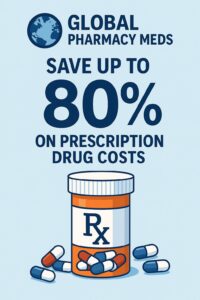How to Leverage Video Marketing to Boost Engagement and Drive Conversions
Video marketing has become one of the most powerful tools in the digital marketing landscape. As video content continues to dominate platforms like YouTube, Instagram, and TikTok, businesses can no longer afford to overlook the potential of video to engage their audience and drive conversions. Here’s how you can leverage video marketing to enhance your brand’s visibility, foster engagement, and ultimately boost your sales.
1. Understand Your Audience
Before creating video content, it’s essential to understand who your audience is, what they care about, and where they spend their time online. Conduct market research, surveys, or analyze your existing customer data to identify your target demographic. This allows you to tailor your video content to their interests, ensuring relevance and engagement.
Key Tips:
- Define your target audience persona.
- Analyze your audience’s preferred video platforms.
- Tailor content style (informative, entertaining, tutorial) based on audience preferences.
2. Choose the Right Platform
The effectiveness of your video marketing strategy depends on selecting the right platform(s) for distribution. YouTube is the largest video-sharing platform, ideal for long-form content, while Instagram and TikTok are better for shorter, bite-sized clips. Understanding the unique dynamics of each platform allows you to craft content that resonates with users there.
Key Tips:
- Use YouTube for educational, in-depth content.
- Utilize Instagram and TikTok for quick, engaging, and visually appealing content.
- Leverage Facebook for longer video ads targeting specific audience segments.
3. Create High-Quality, Engaging Content
Quality matters. While it’s tempting to focus solely on content quantity, the quality of your videos plays a significant role in capturing and holding your audience’s attention. From compelling storytelling to visually appealing designs, creating high-quality videos that add value will set your brand apart.
Key Tips:
- Invest in good lighting, sound equipment, and editing tools.
- Focus on storytelling that aligns with your brand message.
- Use captions and subtitles to cater to viewers who prefer sound-off video experiences.
4. Incorporate Strong Calls-to-Action (CTAs)
A compelling video will spark interest, but a strong call-to-action (CTA) will encourage your audience to take the next step, whether it’s subscribing, making a purchase, or signing up for your newsletter. Make sure to clearly articulate what you want your viewers to do at the end of each video.
Key Tips:
- Use phrases like “Subscribe now,” “Shop the collection,” or “Learn more.”
- Include clickable links and buttons on platforms that allow it (e.g., YouTube’s end screens).
- Keep the CTA simple, clear, and focused on one specific action.
5. Optimize for Search (Video SEO)
Just like traditional SEO, video content needs to be optimized to be discoverable by search engines. Optimizing your video’s title, description, and tags can significantly increase your chances of appearing in relevant searches, both on video platforms like YouTube and within Google’s search results.
Key Tips:
- Use keyword research to guide your video titles and descriptions.
- Include relevant hashtags on platforms like Instagram and TikTok.
- Add detailed video descriptions and closed captions to improve accessibility and SEO.
6. Use Video to Tell Your Brand’s Story
Videos are one of the most effective ways to tell your brand’s story in a way that resonates with your audience. By showcasing the people behind the brand, your company’s values, or even customer testimonials, you can build emotional connections that drive brand loyalty and trust.
Key Tips:
- Create “behind-the-scenes” videos to give a personal touch.
- Share your brand’s mission or values through storytelling.
- Use customer testimonials or case studies to show real-world benefits.
7. Take Advantage of Live Streaming
Live streaming is growing in popularity, especially on platforms like Instagram, YouTube, and Facebook. It offers real-time engagement with your audience, creating an authentic and interactive experience. Live streams are ideal for product launches, Q&A sessions, or live tutorials.
Key Tips:
- Schedule live events and promote them ahead of time.
- Engage directly with your audience by answering questions in real-time.
- Use live video for product demos or special announcements.
8. Repurpose Video Content Across Platforms
To maximize the reach of your video content, repurpose it for different platforms. A long-form YouTube video can be edited into shorter clips for Instagram or TikTok, while snippets can be used as teasers on Twitter or Facebook. This allows you to get more mileage out of each piece of content.
Key Tips:
- Break down longer videos into bite-sized clips.
- Create teasers to drive traffic to full videos on other platforms.
- Use behind-the-scenes footage or bloopers as additional content.
9. Use Video Analytics to Measure Success
Measuring the success of your video marketing campaigns is essential to understand what works and where improvements are needed. Each platform offers its own analytics tools, allowing you to track metrics such as views, engagement, click-through rates, and conversions.
Key Tips:
- Regularly check video engagement metrics (e.g., likes, comments, shares).
- Analyze watch time to determine how long people are viewing your videos.
- Use A/B testing to see what types of videos perform best.
10. Leverage Paid Video Ads
While organic video marketing can be highly effective, paid video ads offer an additional way to reach a larger audience. Platforms like Facebook, Instagram, YouTube, and TikTok provide highly targeted ad options, allowing you to reach users based on demographics, interests, and behaviors.
Key Tips:
- Run targeted video ad campaigns on social media and YouTube.
- Use retargeting ads to engage users who’ve interacted with your brand before.
- Create short, impactful video ads that highlight key benefits.
Conclusion
Video marketing has become an indispensable tool for businesses looking to boost engagement and drive conversions. By understanding your audience, choosing the right platforms, optimizing your content, and leveraging both organic and paid strategies, you can harness the power of video to grow your brand and increase sales. Start implementing these tactics today and watch your engagement soar.
By following these steps, you’ll be well on your way to creating a video marketing strategy that drives meaningful engagement and boosts your business’s bottom line.


